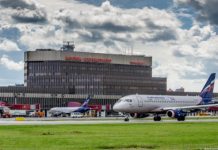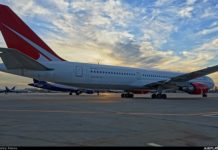Vladislav Filev, the owner of Russia’s largest private air carrier S7 Airlines, said in an interview with Kommersant Thursday that the country’s airline industry will need at least $5 billion in state support amid the COVID-19 crisis in order to return to its pre-crisis 2019 business levels.
Filev added, however, that the chances the government will indeed allocate anywhere near this amount of money to the nation’s troubled airlines are scarce. He says that the degree of state commitment will depend on the levels of air services that the government will want to preserve – and whether it is fully committed to such intentions at all.
Nevertheless, Filev insists there should be a level playing field for all industry participants and that this aspect should take priority over direct government support.
Earlier this month, Russian President Vladimir Putin proposed to the cabinet an allocation of 23 billion roubles ($310 million) to airlines, which is some 15 times less than Filev’s estimate.
“Airlines die when they run out of cash and the fuel stops coming,” he said, “not when they have to downscale or don’t produce profit.”
“After the 1998 crisis, Transaero shrank from several dozen aircraft to seven. In 2013, [prior to its demise] the [cash strapped] airline had 100 aircraft. It survived with seven aircraft, but not with a hundred,” Filev said.
With a reference to the probable priority support the government will provide to state-owned companies, S7’s CEO believes that private carriers still have a chance of survival, “but the government needs to untie their hands,” he asserts.
Currently, S7 is operating just 41 aircraft out of its 103-strong fleet. But he points out that, on average, these 41 aircraft “fly once a day, instead of the five they used to.”
Speaking about the combined traffic numbers of Russian airlines, he believes that without proper state support – once the crisis is over – the numbers will reduce from last year’s 120 million to 60 million passengers, below the 2012 level of 74 million passengers.












